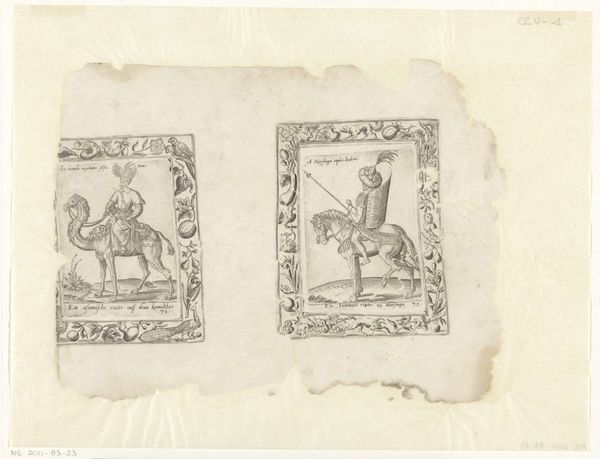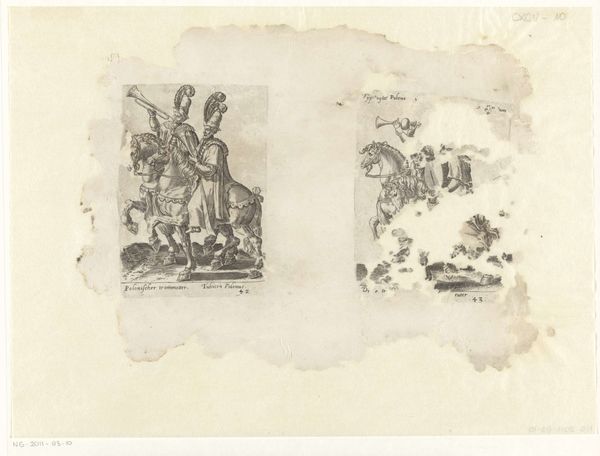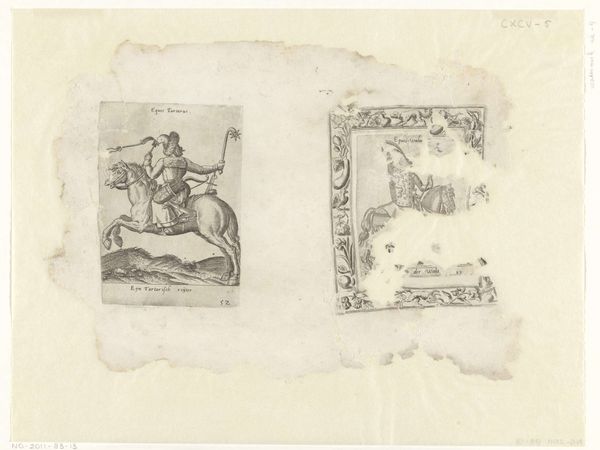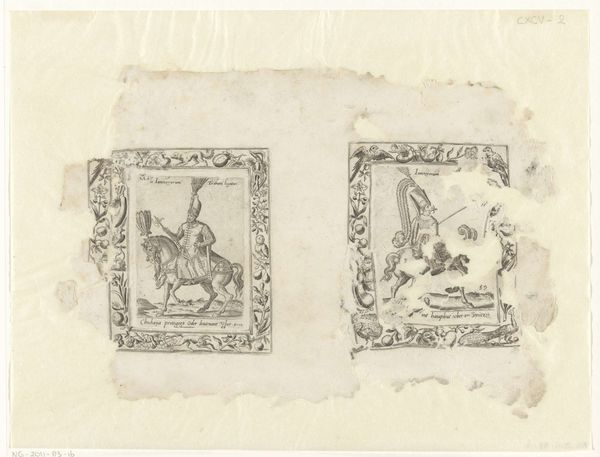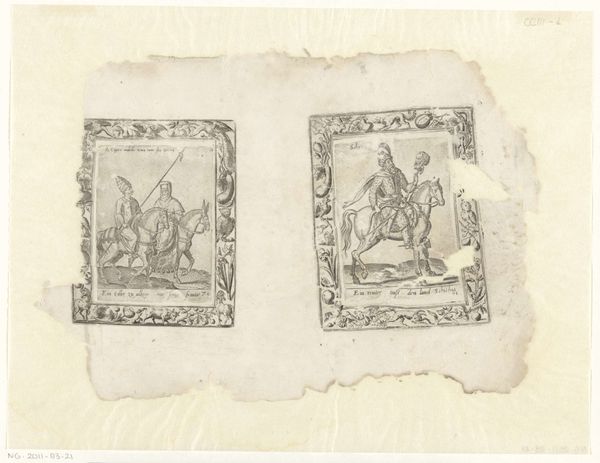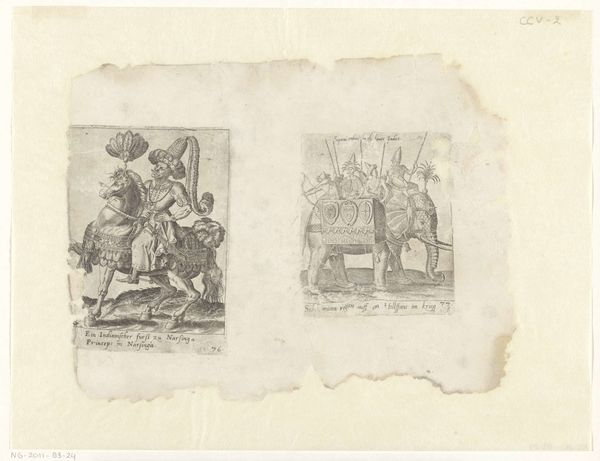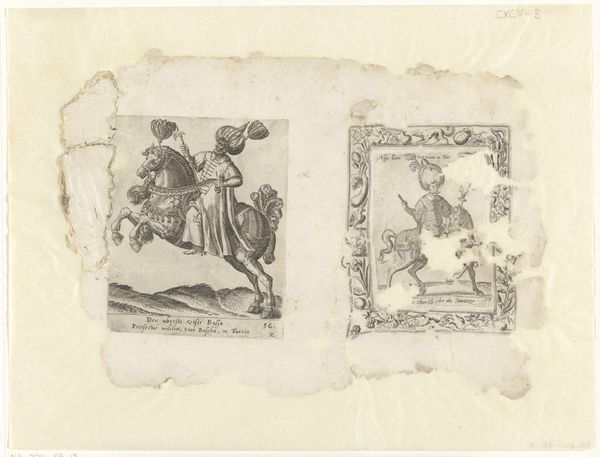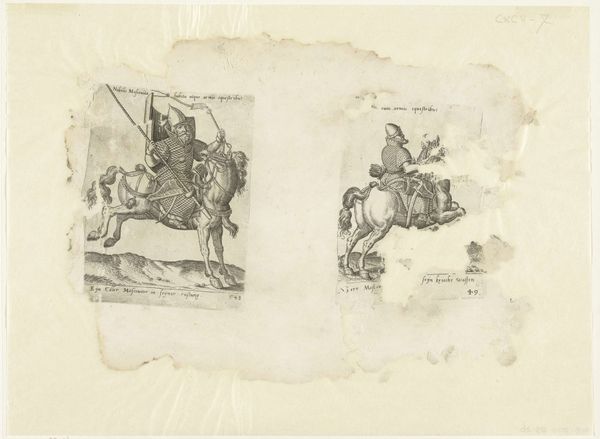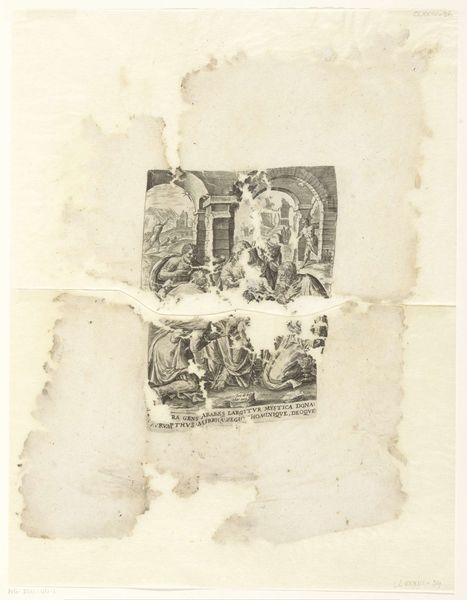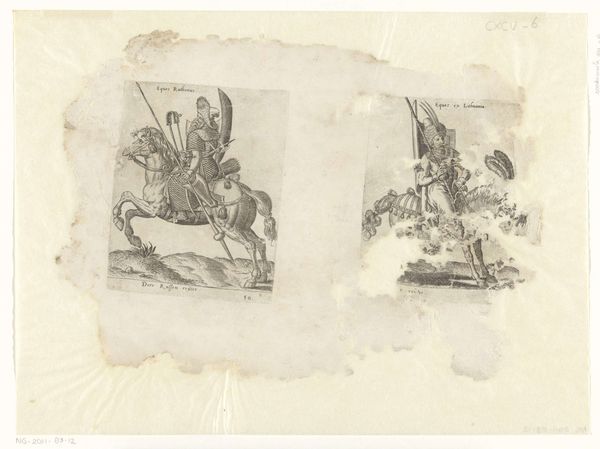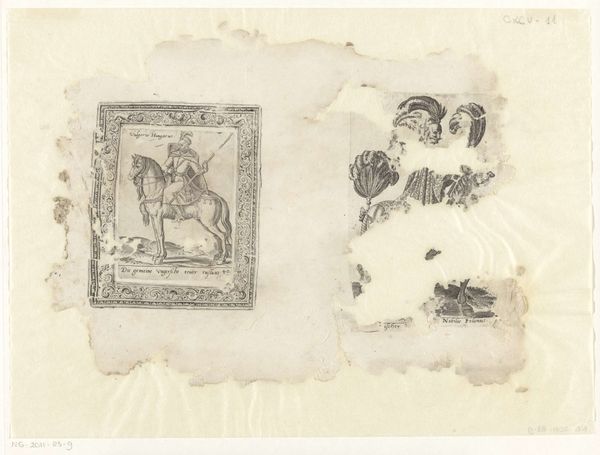
Sultan Murat III en Opperste rechter van Ottomaanse rijk 1576 - 1596
0:00
0:00
abrahamdebruyn
Rijksmuseum
drawing, ink, engraving
#
portrait
#
drawing
#
pen sketch
#
ink
#
islamic-art
#
history-painting
#
engraving
Dimensions: height 239 mm, width 339 mm
Copyright: Rijks Museum: Open Domain
Curator: This engraving, titled "Sultan Murat III and Chief Justice of the Ottoman Empire," likely made between 1576 and 1596, comes to us from the hand of Abraham de Bruyn. It resides here at the Rijksmuseum. The piece presents a rather detailed image of the Sultan, poised on horseback. Editor: It feels immediately imposing. The fine linework and contrast in such a small space suggest a dynamic and hierarchical relationship between the two figures depicted. Almost a show of power and authority that is both ceremonial and, possibly, fraught with tension. Curator: The engraving medium was quite popular at the time, enabling a broader distribution of such images, fueling a specific view, and I believe, misrepresentation, of the Ottomans. Consider the impact of showing the Sultan in this way. How might it influence the reception of Islamic culture and political power within Europe at that time? Editor: The symbols themselves are so revealing: the elaborate turban of the Sultan, a mark of status, or the posture of the horse that symbolizes power and majesty, recall me older portrayals of power that transcends geographical boundaries. It evokes an association with royalty, but also speaks to this "exotic other," reinforcing both fascination and separation. Curator: Precisely, these printed images acted as cultural ambassadors, albeit ones carefully shaped and disseminated. The historical context is particularly key when thinking about the interplay between Europe and the Ottoman Empire at the time and in the following centuries, influencing cultural dialogue, trade and yes, even conflict. Editor: As an object, there's a tension between historical fact and symbolic representation here. This isn't merely a likeness, but a carefully constructed emblem with embedded meanings, that in some ways, the symbolism even overshadows the personality of Sultan Murat III as an individual. Curator: Indeed. We can understand how de Bruyn's print became more than just a depiction of a ruler. It became a political tool. Considering art's purpose beyond aesthetics certainly enhances our appreciation, wouldn't you agree? Editor: Absolutely. Seeing the symbols and images layered through time reveals more about ourselves than the image may initially let on, that the past truly mirrors the present.
Comments
No comments
Be the first to comment and join the conversation on the ultimate creative platform.
